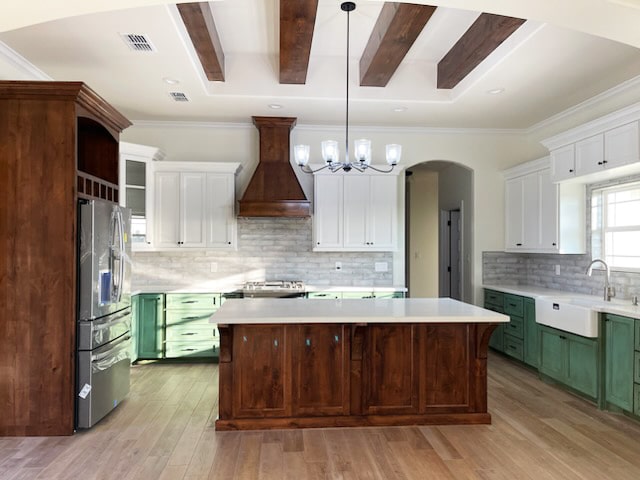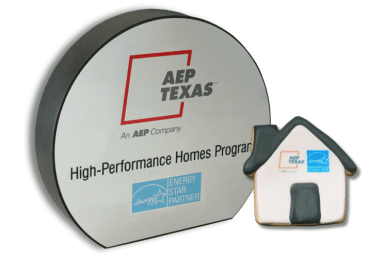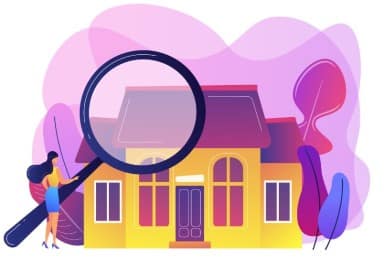Beyond Beauty: Smart Home Buying
When shopping for a new home, most buyers are immediately drawn to its visual appeal: exotic granite countertops, designer light fixtures, stunning flooring, and an airy floorplan. These features often drive purchasing decisions, guided by emotion and first impressions. However, what truly determines long-term satisfaction are factors less visible but far more impactful. Enjoyable indoor comfort, low utility costs, healthy air quality, durable and low-maintenance construction, along with excellent resale value, are crucial. These benefits come with high-performance verified homes, unseen at first glance but deeply felt once living in the space. Choosing a home based solely on its beauty can lead to regrets. So how do you know if a home is an energy-efficient high-performance home before you buy?
There isn’t one contractor who will say their home is not energy efficient. Every builder will say his or her home is energy efficient—but compared to what? The following is a guide for homebuyers to help them identify whether the home they are planning to buy is—or will be built—as a high-performance energy-efficient home.
Today’s energy code is based on the 2015 International Energy Conservation Code (IECC). The code,which was adopted by the State of Texas and became law on August 1, 2016, sets the minimum energy efficiency requirements for new homes built after that date. Homes built to standards that are higher than required by the 2015 IECC are high-performance energy-efficient homes, but they must be verified. Here’s what you need to know and some questions you can ask the builder to help identify those homes.
1. Does the home have a high-performance certification?
Initiatives like the BUILT TO SAVE® Program and ENERGY STAR® Program provide certifications to homes that meet the strict criteria that qualify them as high-performance energy-efficient homes. Ask for a copy of the certification and the home’s systems label, which is required by code after the home is built. If the home is under construction, ask if the home is enrolled in either initiative’s Programs.
2. Do code officials enforce the 2015 IECC or better?
If they do, no problem. If they do not, builders should know that Texas law requires compliance with the 2015 International Energy Conservation Code. Even if city code officials do not enforce the 2015 IECC, this does not mean that the builder is free to ignore the law. The ultimate responsibility to be code compliant rests with the builder, not the municipal code official.
3. How many of the builder’s homes have been certified as energy efficient?
If a builder certifies 100% of its homes as BUILT TO SAVE® or ENERGY STAR®, this is a good indicator of the company’s commitment to building energy-efficient homes.
These builders are true industry leaders that invest their time and money in building homes that provide not just energy savings to consumers but, more importantly, their homes will provide more comfort, better indoor air, more durability with less maintenance—and a potential for a higher resale value for homeowners down the road.
Some contractors build only one certified home per year, which is the minimum requirement of energy efficient initiatives like BUILT TOSAVE® or ENERGY STAR® in order to continue using the program’s logo in their marketing. If you want a home certified as energy efficient from these builders, you must ask for it
4. Was the home modeled for energy efficiency?
Any home can be modeled before it is built. All that is required is a set of blueprints and a Manual J, which specifies the home’s heating, ventilation, and air-conditioning requirements. A home energy rater inputs the information from these documents and models the home to predict its energy efficiency performance once it is built.
The software used by the rater produces a projected Home EnergyRating System score (HERS) and a projected percentage of energy efficiency over minimum code requirements. The modeling allows contractors to make adjustments if required to hit the targeted goal. Modeling is the first step in certifying a home in the BUILT TO SAVE® orENERGY STAR® programs.
5. Was a blower door test and a duct blaster test performed?
A licensed energy rater using specialized equipment performs these tests. The blower door test measures the leakiness of the home’s envelope—how much air comes in and goes out through the roof, windows, doors, and other openings in the home. The duct blaster test measures leaks in the joints and seams of the ductwork in the heating, ventilation, and air-conditioning systems.
These tests are required by the 2015 IECC to comply with minimum code requirements. Note, however, that just because a home received these tests does not mean that the home received an energy-efficient certification. Additionally, as required by law, the tests should be performed by a licensed home energy rater not associated with any part of the construction of the home, including HVAC-related services or products
6. Did the home receive a HomeEnergy Rating System score?
A Home Energy Rating System(HERS) score is the best indicator of a home’s projected energy efficiency performance. The lower the score, the better the home should perform regarding energy efficiency. Without a HERS score or other predicted performance information, you won’t know what your utility bill will be like until you move in. You wouldn’t buy a car without knowing its miles per gallon (MPG). So why would you buy a home without a HERS score?
7. Is the air conditioning unit sized properly for the home?
The air conditioning unit accounts for 50% of the home’s energy consumption but, more importantly, it accounts for 100% of the home’s comfort. A unit that is oversized will not only use more energy by cooling the house too quickly and cycle on and off, it will also never stay on long enough to remove the humidity in the home.
This accumulated humidity will make for an uncomfortable indoor environment and create potential moisture problems in the long term.BUILT TO SAVE® or ENERGY STAR®vertified homes ensure properly sized units for enhanced home comfort.
8. Can the builder provide references?
As with any home you buy, you should ask for references from the builder’s previous homebuyers. Good questions to ask these homebuyers are, “What is your average monthly electrical bill?” and “Do you experience any rooms that are more uncomfortable than others?” And, of course, “Would you buy another home from this builder?”The best references can also be found from the builder’s own peers. Has the builder been recognized with any awards for energy efficiency? Are they or have they ever been featured as a Leading Energy Efficient Builder?
Visit www.BuiltToSave.org to find out more about why you should not settle for a minimum code-built home when you can enjoy the savings and comfort of a high-performance home. You can also find builders enrolled in the BUILT TO SAVE® program offering high-performance homes.
© RGV New Homes Guide, 2024. Unauthorized use and/or duplication of this material without express and written permission from this site’s author and/or owner is strictly prohibited. Excerpts and links may be used, provided that full and clear credit is given to RGV New Homes Guide with appropriate and specific direction to the original content.








